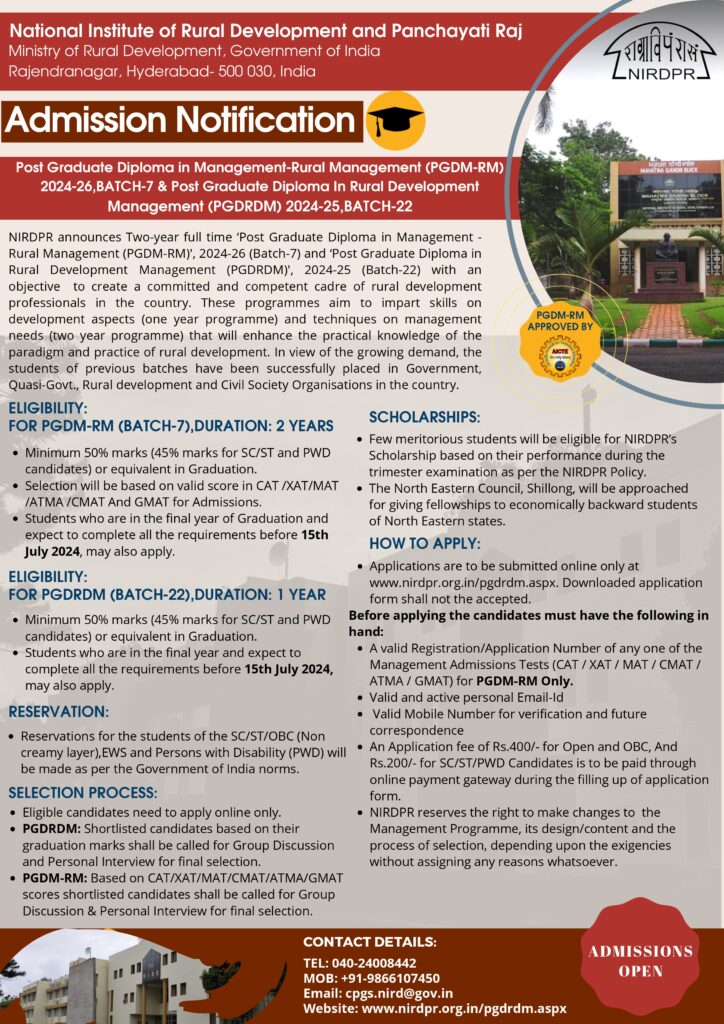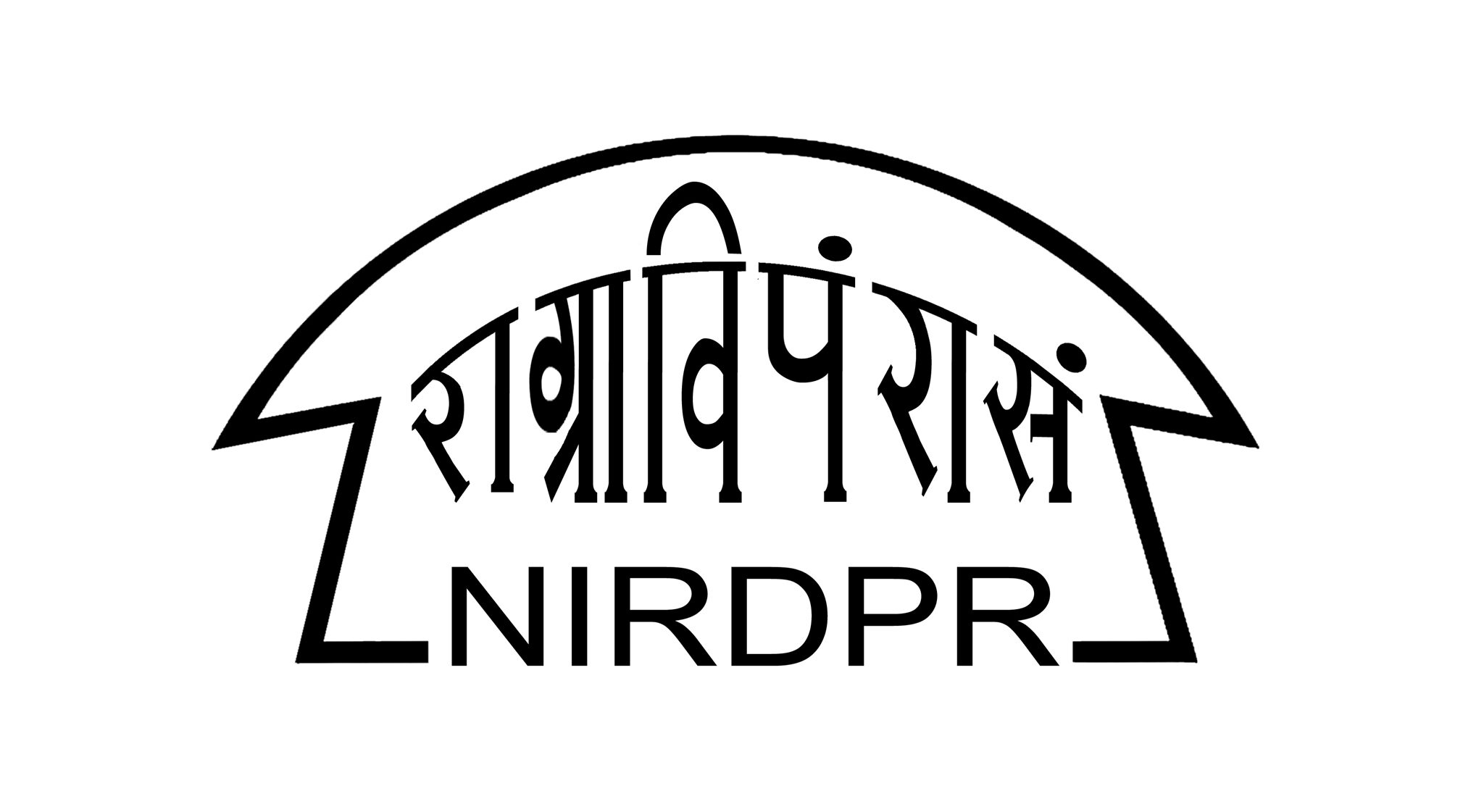
CONTENTS:
NEW COLUMN:
GENDER KALEIDOSCOPE – A Closer Look at Gender for Multifaceted Exploration of Modern Challenges
Training Programme for ISS Probationers on Poverty and Inequality Estimation
National Workshop for Deliberating the Scope of Export Marketing of Handicraft and Handloom Products of SHGs
Training Programme on Documentation of Cases in Mahatma Gandhi NREGS
Training Programme on Development Journalism in the Age of Artificial Intelligence
CASE STUDY: Exploring the Potential of Ginger and Cinnamon Microenterprises in Meghalaya
NIRDPR Staff Attend Official Language Workshop at NAARM, Hyderabad
NEW COLUMN:
GENDER KALEIDOSCOPE – A Closer Look at Gender for Multifaceted Exploration of Modern Challenges
Dr Vanishree Joseph
Assistant Professor, Centre for Gender Studies, NIRDPR
‘Gender Kaleidoscope’ is a new and dedicated segment in the Pragati newsletter, launched by the Centre for Gender Studies at NIRDPR. This segment is designed to shed light on the multifaceted and dynamic issues related to gender in various spheres of life. Each edition will feature in-depth analysis, research findings, and insightful commentary on gender-related topics, aiming to educate, inform, and inspire our readers. Gender Kaleidoscope is a segment and a movement towards greater understanding, equality, and inclusion. Addressing critical gender issues and promoting informed discussions will play an essential role in transforming perspectives and driving positive change, and Gender Kaleidoscope proposes to do that.
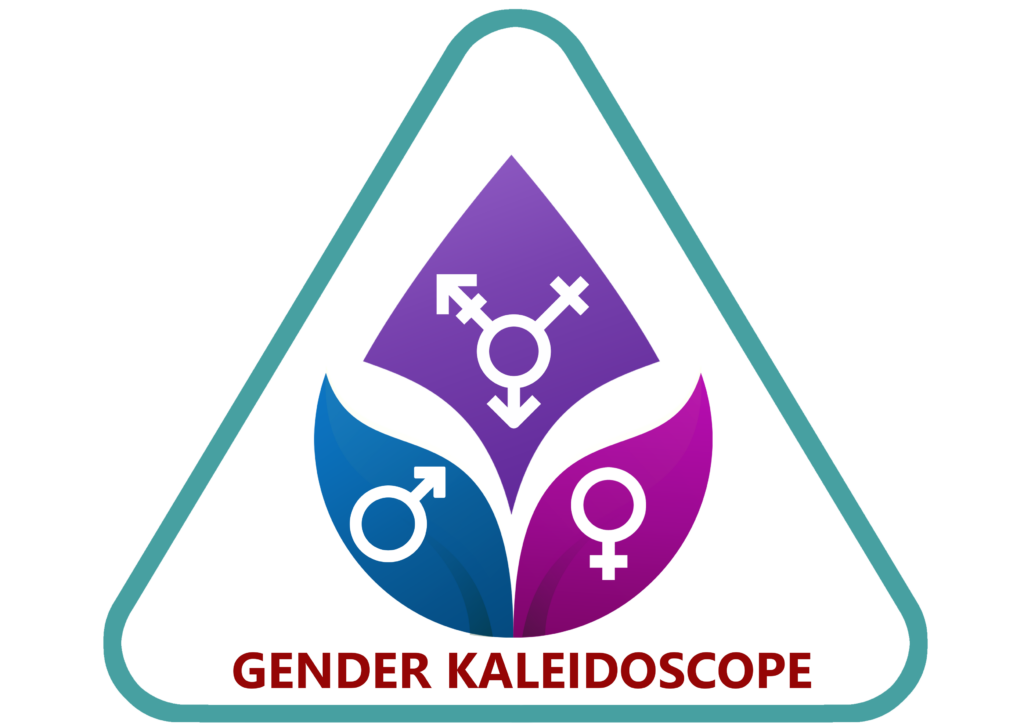
Gender Kaleidoscope aims to increase awareness about gender issues by providing educational content that is both informative and thought-provoking. It will address topics ranging from gender equality and women’s empowerment to the rights and recognition of transgender individuals. Through personal stories, case studies, and real-life examples, Gender Kaleidoscope aims to build empathy and understanding among readers, highlighting the human side of gender issues. By presenting well-researched articles and data-driven insights, Gender Kaleidoscope will inform policymakers, practitioners, and the general public about gender issues and the need for effective interventions. Through this initiative, NIRDPR and the Centre for Gender Studies will establish themselves as leaders in gender research and advocacy, contributing to their growth and reputation. The segment will open doors for collaborations with other institutions, NGOs, and government bodies, fostering partnerships that can amplify the impact of gender-focused initiatives.
Stay tuned for insightful articles, compelling stories, and engaging discussions in every issue of Gender Kaleidoscope, exclusively in the Pragati newsletter. Your participation and feedback are crucial to the success of this initiative, and we look forward to making a meaningful impact. Together, we can create a more just and equitable world.
This inaugural edition presents insights into gender representation in the 18th Lok Sabha election. The data from the 2024 Indian General Election provides several key insights into gender participation and representation, especially in light of the recently passed Women’s Reservation Act, which mandates that 33 per cent of seats in the Parliament and State Legislative Assemblies be reserved for women and will be implemented in five years. Currently, men dominate the candidate pool, making up 90.26 per cent of contestants, while women constitute only 9.71 per cent and transgender persons a mere 0.024 per cent. Despite this, voter turnout is almost equal between men (51 per cent) and women (49 per cent), indicating strong political engagement among women. However, men constitute 87 per cent of the elected representatives, with women at 13 per cent, highlighting the need for the women’s reservation to ensure women’s voices are more adequately represented in legislative bodies. The number of elected women varies significantly across states, with West Bengal having a relatively higher number of women representatives (11) compared to states like Arunachal Pradesh and Goa, which have none. Moreover, it is essential to note that obtaining gender-segregated data regarding elections is currently challenging, and there is a pressing need for more detailed and accessible gender-segregated data to understand better and address these disparities.
The Women’s Reservation Act 2023 is poised to address the severe gender imbalance among elected representatives by reserving 33 per cent of seats for women, thereby ensuring a minimum level of female representation, and likely encouraging more women to contest elections. While the Act will mandate more women in legislative roles, significant support structures will be needed to ensure that women are not just present but effective in these roles, including training, mentorship, and financial support. Political parties and civil society must start preparing now to identify, train, and support potential female candidates who can contest and win the reserved seats once the bill is implemented. Immediate actions should include initiating training programmes, providing financial and logistical support to female candidates, and encouraging political parties to adopt internal quotas for women candidates. Additionally, awareness campaigns should be conducted to educate the public about the benefits of increased female representation in governance, and ongoing monitoring and evaluation of the implementation process should be advocated to ensure that the Women’s Reservation Act meets its objectives.
Infographics and Key Data



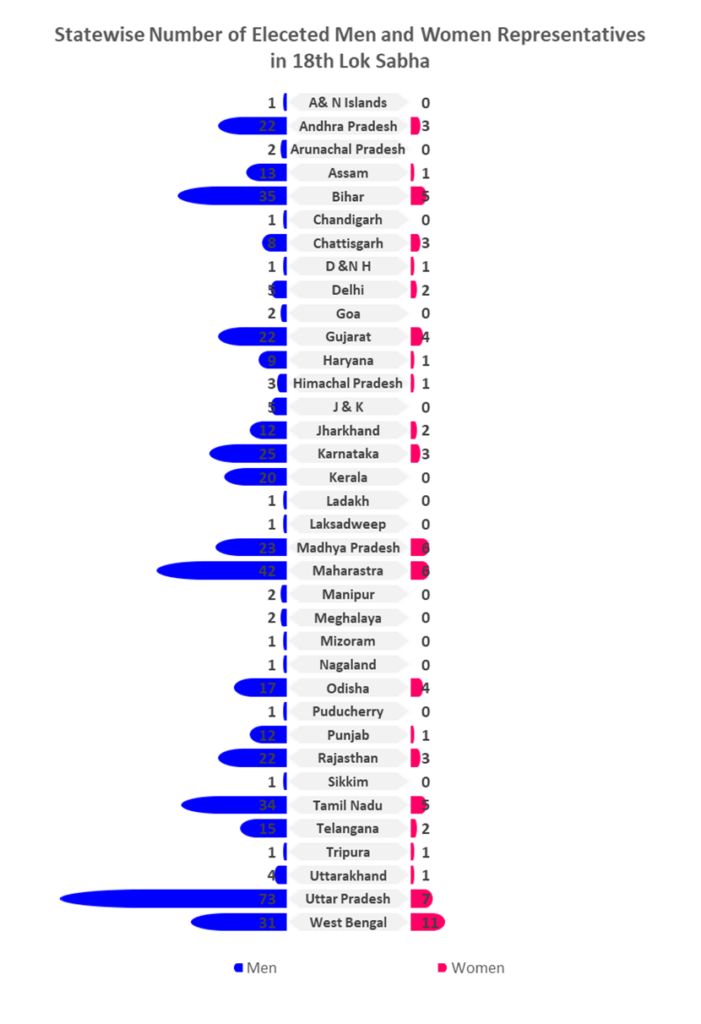
Training Programme for ISS Probationers on Poverty and Inequality Estimation
The Centre for Entrepreneurship Development & Financial Inclusion (CEDFI), NIRDPR conducted a 5-day residential training programme on ‘Poverty and Inequality Estimation’, for Indian Statistical Service (ISS) Probationers (45th – 2023 batch), sponsored by National Statistical System Training Academy (NSSTA), MoSPI, Govt. of India during 29th April – 03rd May 2024 on its Hyderabad campus.
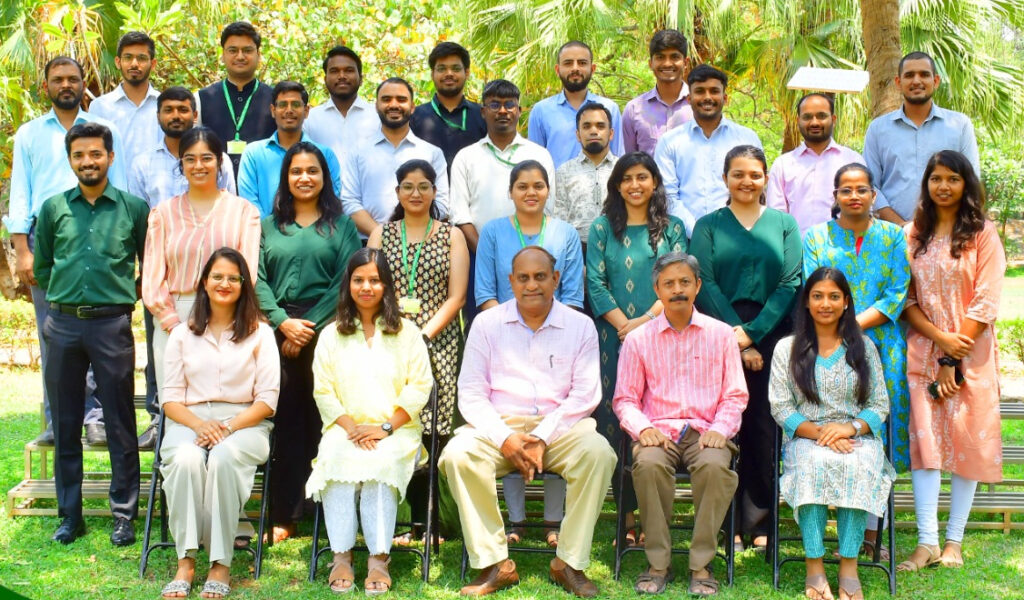
The training programme was designed to offer a fine blend of theory, practice, experiential learning and lessons from good practices that will empower the participants to understand and assess the diverse range of emerging issues and concerns relating to poverty and inequality. It was also envisaged to enhance skills and expertise to critically analyse government schemes and programmes designed to address poverty and inequality. A series of lectures were arranged on various dimensions of poverty and inequality, especially from the perspective of rural development. In all sessions, discussions were carried out on inter-disciplinary, evidence-based and research-driven. Twenty-seven ISS probationers, who were undergoing training programmes at various places, participated in this training programme.
Dr Partha Pratim Sahu, Associate Professor and Head of CEDFI, and also the Course Director, introduced the whole programme and took a comprehensive session on concepts, measurement issues and various committees on poverty and inequality. He also discussed the global scenarios of poverty and inequality. There was a detailed discussion on the advantages and disadvantages of various measures of poverty and inequality, which the statistical officers must be aware of. He also discussed the use of new measures, i.e. MDPI and various concerns relating to it. He emphasized the necessity of good quality data at the right time for robust policymaking. All these issues are contextualised in the emerging changes in the rural development landscape, i.e. localization of SDGs, role of local institutions, convergence, reverse migration, rise of the non-farm sector, and major RD and PR interventions.
A series of theme-based lectures were arranged, including contextualizing poverty and inequality in rural development, longitudinal village studies, large-scale public employment programmes – MGNREGA, gender, skilling, informal sector, possibilities of resource-rich gram panchayats, digital divides, social audit, etc. In all these sessions, attempts were made to connect the discussion with poverty and inequality and their various dimensions. The participants were also apprised of a large number of datasets that can be used to understand various facets of poverty and inequality.
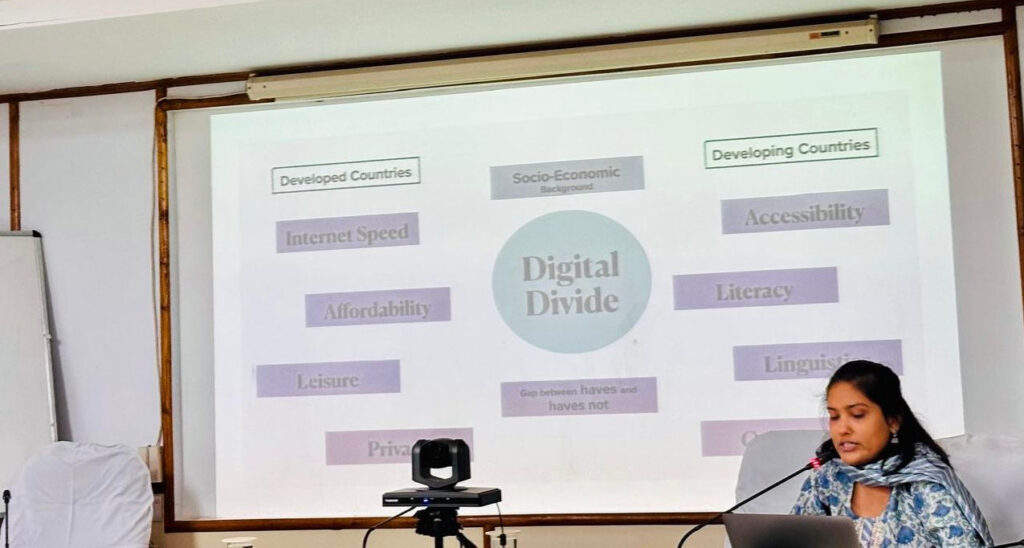
With the increased use of AI and ML, digital divide, Algorithmic Bias and data-driven governance have emerged as challenges. These issues were discussed at length in a session. Participants were enlightened about how algorithmic bias could exacerbate the digital divide, leading to discrimination in data-driven governance processes. Resource person Dr Natani emphasised the importance of understanding and addressing these biases to ensure fairness and equity in decision-making processes.
One of the crucial dimensions of poverty and inequality is the presence of informal sector. A detailed discussion was carried out on the nature, characteristics and measurement of the informal sector and possible interventions to move informal workers and enterprises to a formal institutional setup. Through this discussion, participants gained a deeper appreciation for the intricacies involved in measuring the informal sector’s contribution to the overall economy.
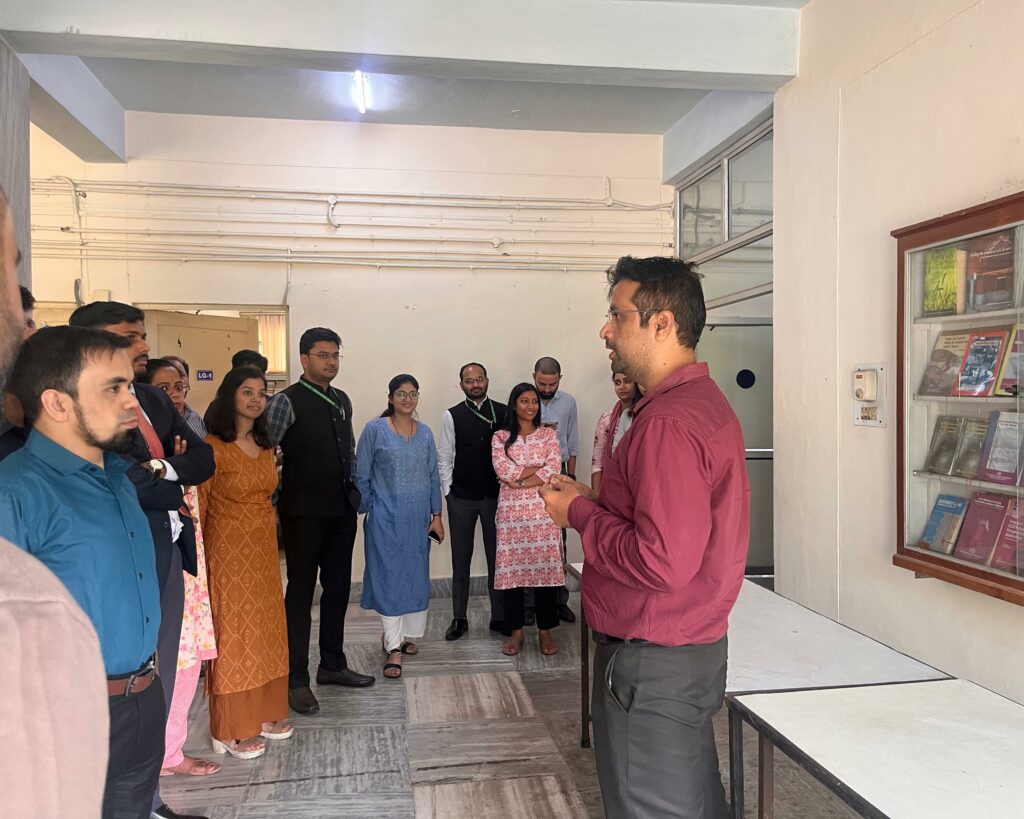
In the emerging discussion on the localisation of SDGs, local institutions such as panchayat can play a decisive role in addressing poverty and inequality. The various contours of Gram Panchayat finances in India were discussed with recent datasets, cases and good practices. A large number of possible avenues to ensure resource-rich gram panchayat were also deliberated. This session appraised participants about the existing status of resource allocation and management within Gram Panchayats in India, while also considering potential reform options to enhance their financial sustainability and effectiveness in local governance. Participants engaged in discussions and analyses to identify key challenges and opportunities in this regard, with a view towards formulating actionable strategies for ensuring the optimal utilisation of resources at the grassroots level.
Skilling is an important enabler to moderate poverty and inequality in rural areas. The role and potential of skilling were discussed with respect to DDU-GKY, which is a placement-linked skill programme. The whole process starting from mobilisation of participants to monitoring of the programme was elaborately discussed.
Although we have a large number of schemes and programmes relating to various dimensions of poverty and inequality, because of poor implementation, lack of transparency and monitoring systems, we are not getting the desired outcomes from these programmes. To appraise participants about an emerging tool, i.e. social audit, a session on ‘Improving Transparency and Accountability of Anti-poverty Programmes: Learnings from Social Audit System’ was conducted.
The participants were taken to RTP to see live demonstrations of more than 20 livelihood models as well as affordable housing typologies. Such livelihoods may be promoted aggressively in villages to moderate poverty and inequality. A visit to the library was arranged to apprise participants about e-resources and the rich book collection.
In addition to these sessions, pre and post-training quizzes were undertaken. Each participant was evaluated on the basis of quiz, essay and class participation. Detailed feedback was taken in the last session as well on the Training Management Portal (TMP). All presentation files and a set of papers on poverty and inequality were also shared with the participants. It is hoped that all the ISS-probationers find this programme useful and they will apply some of the learnings from it in their professional work. Overall, the intent and spirit on which this programme was conducted, seems to have delivered the desired outcomes.

Besides external resource persons, NIRDPR faculty members, Prof S. Jyothis, Dr S Ramesh Sakthivel, Dr Surjit Vikraman, Dr Vanishree Joseph, Dr C. Dheeraja, and Dr Sandhya Gopakumaran took sessions in the training programme. This programme was coordinated by Dr Partha Pratim Sahu, Associate Professor and Head of CEDFI.
(This report was prepared by Sh. Gaurav Bharti [ISS (P) – 2023] with inputs from Dr Partha Pratim Sahu, Associate Professor and Head of CEDFI.)
National Workshop for Deliberating the Scope of Export Marketing of Handicraft and Handloom Products of SHGs
A national workshop for deliberating the scope of ‘Export Marketing of Handicraft and Handloom Products of Self-Help Groups’ was organised by the Centre for Marketing & Promotion of Rural Products, Entrepreneurship Development (CMPRPED), National Institute of Rural Development & Panchayati Raj (NIRDPR), Delhi Branch at Casuarina Hall, India Habitat Centre Lodhi Road, New Delhi, from 14th to 15th May 2024.
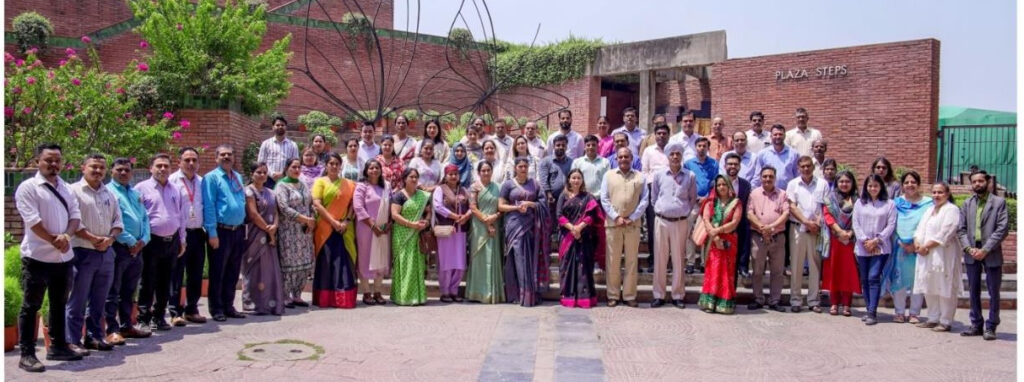
Marketing of products of the SHGs is one of the major concerns of NIRDPR and the Ministry of Rural Development, Government of India. Most of the rural entrepreneurs/SHGs/Producer Groups/PGs/CBOs market their products locally or either through SARAS Mela/Fairs, and they do not think of mass production and massive marketing globally. To dispel this constraint, the CMPRPED, NIRDPR Delhi Branch organised this two-day national workshop. The objective of the workshop was to build the capacity of participants for export marketing of handicraft and handloom products, discuss linkages of SHGs with export councils, export federations, embassies, corporate federations, etc., for export of their products and prepare a roadmap for export marketing of SHG products.
At the inaugural ceremony, Dr. Ruchira Bhattacharya, Assistant Professor & Head NIRDPR Delhi Branch welcomed the dignitaries.
“The development and sustainability of the self-help groups is of paramount importance to the Government of India and its development partners. As the National Rural Livelihood Programmes reach an unprecedented scale, with nearly 10 crore women mobilised into the SHGs, now the need is felt for developing the SHGs into higher-order economic entities, which will be profitable and well connected to the markets. So, marketing of SHG-made products is now one of the major pillars of success for SHG enterprises,” she said.
Further, the lighting of the lamp was done by Ms. Swati Sharma, Joint secretary (RL), MoRD, Ms. Caralyn Khongwar Deshmukh, Additional Secretary, MoRD, Shri Charanjit Singh, Additional Secretary (Rural Livelihoods) & Dr G. Narendra Kumar, Director General, NIRDPR.
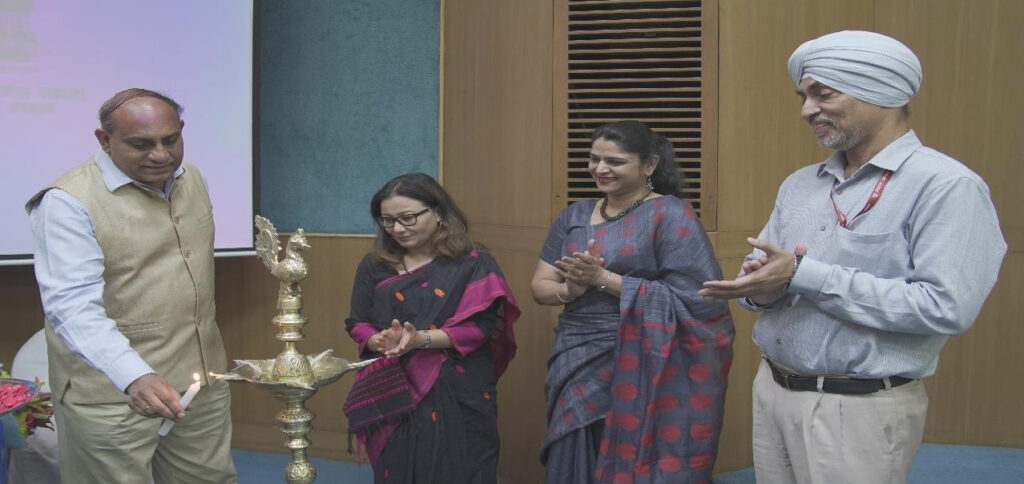
Dr. Ch. Radhika Rani, Director (NRLM-RC) & Centre Head (CMPRPED), NIRDPR delivered the welcome address. She spoke about creating higher-order enterprises that support other enterprises in a hub and spoke model, mapping of the existing non-farm enterprises, developing the capacity building framework, regulatory norms and compliances required for export of handicraft and handloom products of SHGs, and collaboration with Export Promotion Councils, Indian Embassies, etc., for the export of SHG products.
In her address, Ms. Swati Sharma, Joint Secretary (Rural Livelihood), MoRD, said that the role of the MoRD and the NRLM is primarily to create that an enabling environment, where the Didis are provided with the facilities, not only in terms of technological assistance but also bank linkages. She wanted the SRLMs/Didis to understand the demand in the market and engage in production as per demand. “We should approach FICCI, CII, ASSOCHEM, etc., for association of SHG Didis with these industries,” Ms. Swati Sharma said and added that NRLM is also making efforts to have a convergence/ partnership with Export Promotion Councils, Ministry of Commerce, DGFT, and similar agencies/departments.
Ms. Caralyn Khongwar Deshmukh, Additional Secretary, MoRD emphasised that the focus should be on discussing strategies and issues, and problems that local SHGs are facing and how to adapt and conform to certain standards and qualities. “As we are looking at the global market, the quality standards and quality intervention are extremely important. So, these aspects have to be kept in mind while we think about how to make a forage and a mark on the global market,” she said.
Shri Charanjit Singh, Additional Secretary (Rural Livelihoods), MoRD spoke about the significance of Quality & Certification, finding export partners, and the need to market the story of the SHG Didis, products, etc.
In his keynote address, Dr G. Narendra Kumar, Director General, NIRDPR expressed satisfaction over the Lakhpati didi initiative moving forward. “The self-help group movement was intended to lift the poor women out of poverty, but it has not happened as expected,” he said. The DG further highlighted the aspects, such as maintaining quality, Pricing, Clusters for Production and customization, the significance of re-engineering, identifying the Potential Products, Business Plan for Domestic Market as well as International Market, and Four Ps, i.e. Product, Price, Promotion & Place. Dr Narendra Kumar concluded by stressing the importance of developing a good framework for exporting SHG products, making a good business plan, and developing training modules.
Shri Chiranji Lal, Assistant Director (CMPRPED), NIRDPR Delhi Branch proposed vote of thanks.
The issues covered in the workshop included Challenges & Opportunities for Indian Handicraft & Handloom Exports of SHG Products, Procedures for Export Marketing, Potential of marketing of Handicraft & Handloom Products made by Rural SHGs in International Market, Possibility of exporting SHG Products toward e-commerce, Maximizing Marketability through Effective Designing & Packaging, Labelling and Bar Coding Strategies, Benefits of Exports, the process of getting Import Export Code, Facilitating SHGs to enter in Export Market and Collaboration with Export Councils, Indian Embassies, Indian Diaspora for export marketing of SHG Products.
Technical issues such as Regulatory Compliances, Custom Regulations (Export documents and duties), product standards (Labelling, Designing, Packaging, Barcoding, etc.), Intellectual Property Rights (trademark, patent, copy right), Shipping Challenges, Cultural differences & Language barriers, Promotion & Marketing, Quality Control, Benefits of Exporting SHG Products were also discussed during the above sessions.
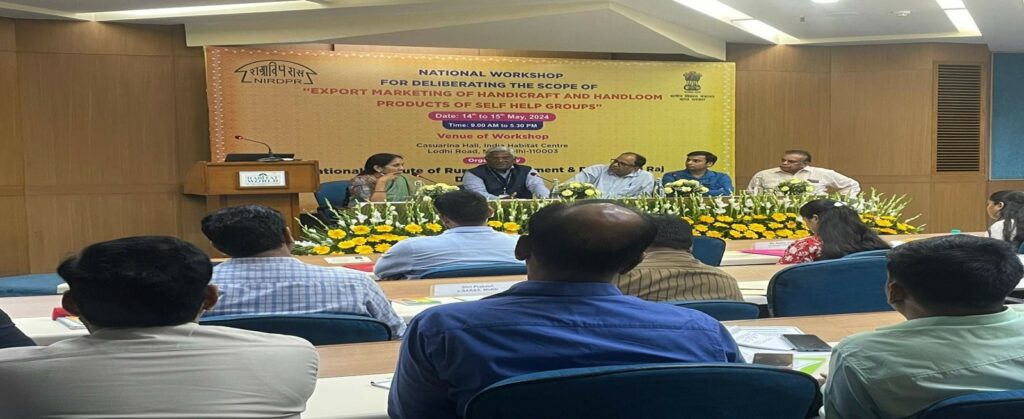
Further, the strategies to facilitate SHGs for export, i.e. Training and Capacity building of SHGs, Certification and Quality Assurance, Market Product Research & Trend analysis and mechanisms for linkages with Export Promotion bodies, were also discussed during the workshop.
The subject experts and resource persons, who attended the technical sessions and panel discussions included Dr M Sundar, Joint Director, Handloom Export Promotion Council (HEPC), Shri Rahul Ranjan, Program Officer, Export Promotion Council for Handicrafts (EPCH), Shri Jaswant Kasana, PRADAN, Shri R.P. Singh, Director, Federation of India Micro and Small & Medium Enterprises (FISME), Shri Mayur Gupta, Deputy Manager, Tribal Co-operative Marketing Federation of India (TRIFED), Ms Bhavya Jaggi, Category Manager, Cross Border Trade, Open Network for Digital Commerce (ONDC), Dr Shakti Sagar Katre, Assistant Professor, NIFT, Shri Manas Chugh, Export Consultant, Shri C.P. Sharma, President, Handloom Handicraft Exporters Welfare Association (HHEWA), Shri Bharat Deep Vadhera, General Secretary & Shri Manas Chugh, Export Consultant.
Ms Swati Sharma, Joint Secretary (Rural Livelihood), Ministry of Rural Development and Dr G. Narendra Kumar, Director General, NIRDPR attended the valedictory session and offered concluding remarks.
Training Programme on Documentation of Cases in Mahatma Gandhi NREGS
The Centre for Wage Employment & Livelihoods of the National Institute of Rural Development and Panchayati Raj (NIRDPR) organised a three-day training programme on Documentation of Cases in Mahatma Gandhi NREGS on its Hyderabad campus from 20th -22nd May 2024. A total of thirty-four participants from eleven states were engaged for three days on how to identify and document cases in Mahatma Gandhi NREGS.
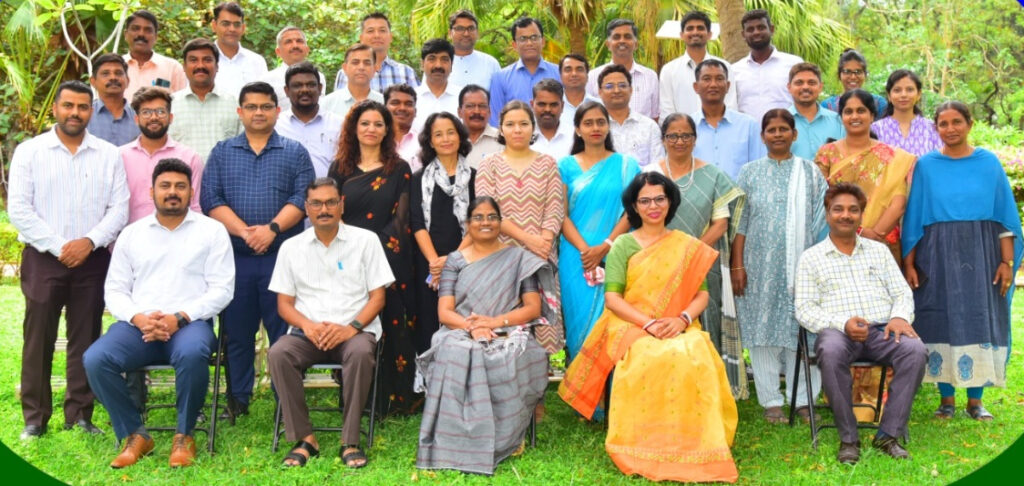
Effective documentation of cases is imperative to ensure transparency, accountability, and optimal utilisation of resources under this transformative scheme. In this context, it is crucial to acknowledge the substantial efforts undertaken since its inception. However, a significant challenge lies in documenting these efforts and the outcomes achieved. While noteworthy changes and innovations have been initiated in specific states or areas, the absence of systematic documentation has hindered their replication and dissemination to other regions. Implementing officers, despite their commendable work, have faced barriers in effectively capturing and sharing their experiences, lessons learned, and successful practices. Consequently, valuable opportunities for cross-learning and scaling-up interventions have been missed. Addressing this gap in documentation and dissemination is essential to harnessing the full potential of MGNREGS and ensuring that successes are replicated. Additionally, it is crucial to capture narratives from the grassroots level and first-hand accounts. This enriches the documentation process by adding depth and a human perspective. These stories offer valuable insights into the real experiences of beneficiaries, showcasing the tangible effects of MGNREGS on their lives and livelihoods. Documenting these narratives allows officials to gain a nuanced understanding of the programme’s efficacy, the challenges communities face, and areas that need improvement.
Furthermore, grassroots stories act as potent advocacy tools, amplifying the voices of marginalised groups and emphasising MGNREGS’s role in tackling socio-economic disparities. This, in turn, fosters inclusive and sustainable rural development.
The major objective of the training programme was to equip the participants with an in-depth understanding and practical skills in documenting cases under Mahatma Gandhi NREGS.It employed a blend of interactive lectures, case studies, group discussions and role-plays, along with hands-on exercises. The training programme started with an overview of the Mahatma Gandhi NREGS and the details of the Act, understanding the difference between a Case and a Best Practice, followed by a basic understanding of qualitative and quantitative tools of data collection, role of IT and GIS in case documentation, case writing methodology, spirit of inclusivity in case documentation, followed by significance of case documentation in Mahatma Gandhi NREGS.
Prior to the commencement of the training programme, caselets were shared with participants for group discussions and role-play. The enthusiasm of the participants in the role-play sessions was palpable. The participants appreciated how the elements of case documentation were discussed and analysed. Dr Sonal Mobar Roy, Assistant Professor, Centre for Wage Employment and Livelihoods, coordinated the training programme.
Training Programme Development Journalism in the Age of Artificial Intelligence
The Centre for Development Documentation & Communication (CDC), NIRDPR organised a three-day training programme, ‘Development Journalism in the Age of Artificial Intelligence’, on the Institute’s Hyderabad campus from 20th – 22nd May 2024.
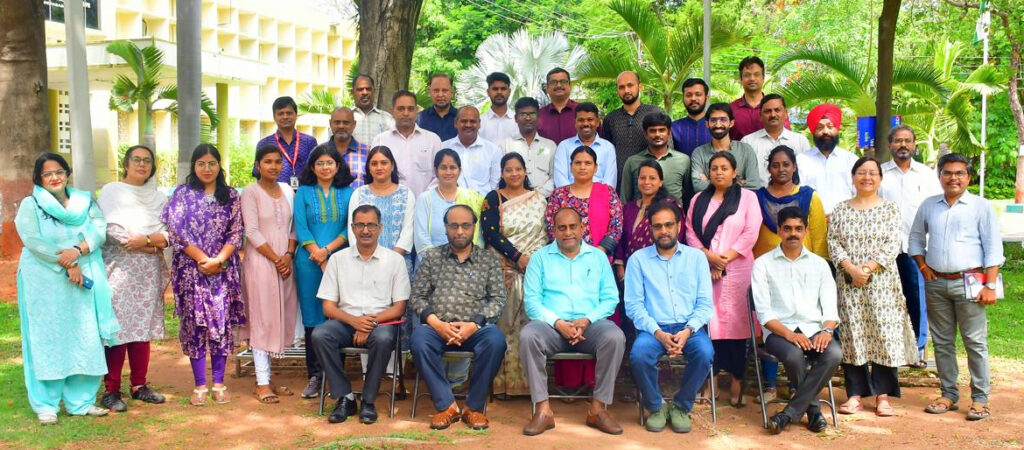
Two experts in the field of AI training for journalists – Mr Sunil Prabhakar, Consultant, Mathrubhumi Online & Mr P. M. Narayanan, Chief Producer (South Asia), ARD First German TV, Delhi – were the resource persons for the training programme. Dr Jyothis Sathyapalan, Prof. & Head, CDC and Dr M.V. Ravibabu, Associate Prof. & Head, CICT, also handled sessions.
In the inaugural session, Dr Jyothis Sathyapalan, Prof. & Head, CDC & Course Director, delivered the welcome address. Mr Krishna Raj, Assistant Editor, CDC & Course Coordinator, welcomed the participants and introduced the Chief Guest of the inaugural session, Dr G. Narendra Kumar, IAS, Director General, NIRDPR, resource persons Mr Sunil Prabhakar and Mr P.M. Narayanan, and Dr Jyothis welcomed them with a bouquet. Dr G. Narendra Kumar, IAS, Director General, delivered the inaugural address. He touched upon the various roles played by NIRDPR in the realm of the rural development sector – as an apex capacity-building organisation, a think-tank for the Ministry of Rural Development and a central technical support agency. Sharing personal experiences, he further explained the prospects and possibilities offered by AI in various facets of life, including the media industry. Referring to the trend of insignificant events repeatedly making headlines, he reminded the journalists about the need for more focused and positive reporting by giving prominence to the real issues the common person faces.
The 3-day training programme focused on the fundamentals of AI in journalism. It emphasised the relevance and potential impact on news gathering, reporting, and distribution. The programme intended to impart knowledge about AI-driven tools for data mining, pattern recognition, and content generation to participants comprising working journalists and journalism students, which can aid them in uncovering and telling more nuanced stories about social issues, economic development, and human rights. The programme included interactive sessions where attendees could experiment with AI tools, guided by experts in the field.
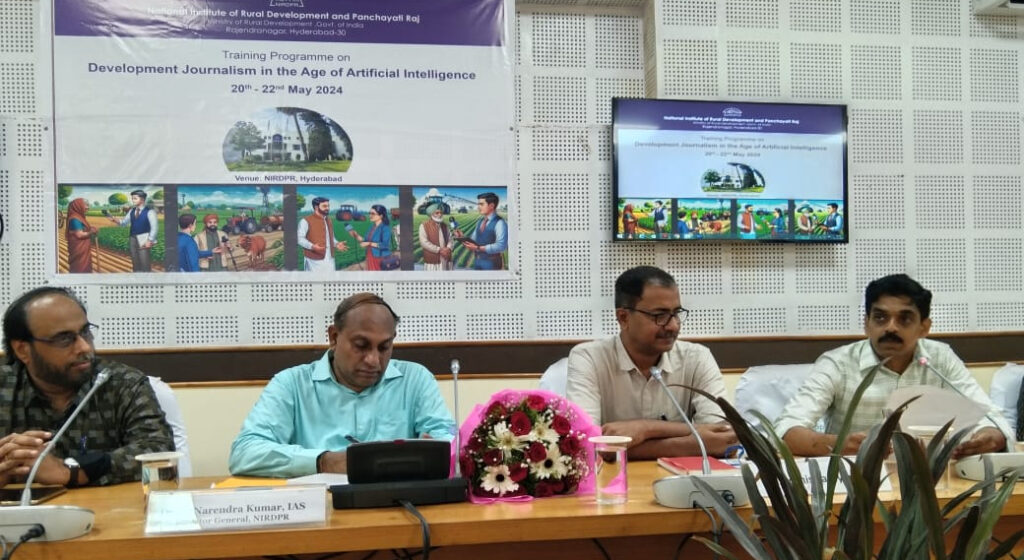
It further delved into the ethical considerations and challenges of integrating AI into journalism by exploring the balance between automated content production and journalistic integrity. It featured case studies demonstrating successful AI applications in development journalism, highlighting how AI can aid in reporting complex issues like poverty, education, and healthcare. The programme was planned in such a way that participants draft their own developmental story using AI tools, thereby fostering a hands-on understanding of the synergies between AI and journalism.
In the nine sessions spread over three days, the resource persons discussed a wide range of topics. Mr P. M. Narayanan explained how a development journalist should tell stories, citing examples that highlighted the importance of placing text in context. Sharing his experience of reporting in third-world countries in South Asia, Mr P M Narayanan explained how AI can help generate storyboards. He underscored that AI cannot replace human intelligence as it lacks the sensitivity towards development issues. . He also explained the changes in concepts –from broadcasting to multicasting to narrowcasting.
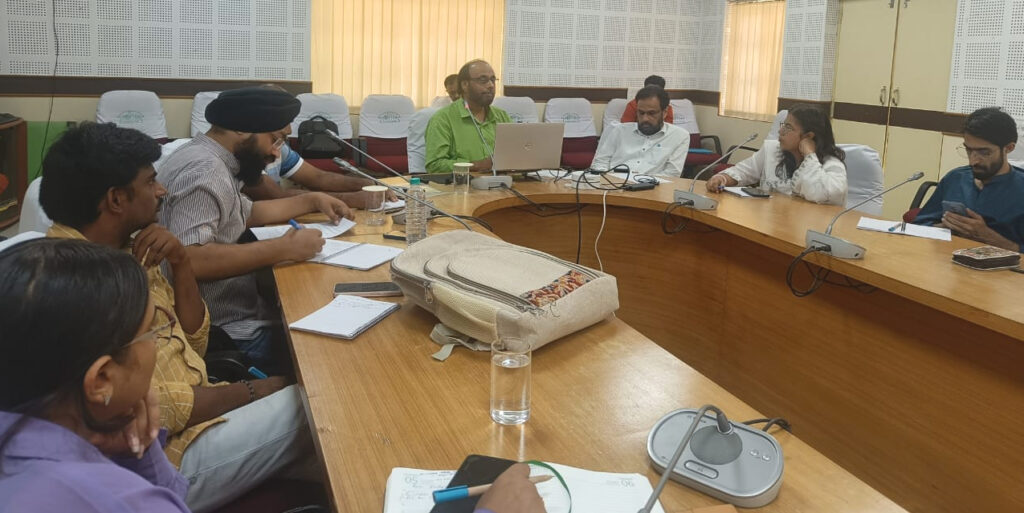
Mr Sunil Prabhakar presented an overview of social media user demographics in India. He emphasised the relevance and potential of AI technologies, their impact on news gathering, reporting, and distribution, and AI-driven tools for data mining, pattern recognition, and content generation. He explained how AI-powered tools could support journalists in content generation, quick large data analysis, and personalised news delivery. He touched upon topics like Benefits of Generative AI in the Government, Pitfalls of using Generative AI, and Deep fakes. He also talked about the use of generative AI tools, the importance of having the right tool, generative AI application landscape, Ggenerative AI applications, AI writing, editing, translating, and image, video, and audio generation tools.
Participants were explained the methods to create developmental stories using AI tools, such as large language models (LLMs) like Gemini and ChatGPT. Other topics included Indian AI Chat Boats and AI Translators like Bhashini, Multimodal Large Language Models, how to use ChatGPT, Retrieval-Augmented Generation (RAG), the art of creating prompts, generative AI tools & techniques, AI tools for rewriting, editing, summarising, translation, paraphrasing, literature review, Bing Chat, Microsoft Co-Pilot, Bing Image Creator, DALL-E, Canva, Gamma, etc.
Prof. Jyothis Sathyapalan gave the participants an outline of the major RD programmes of Government of India. He explained the concepts of Growth Domain, Equity Domain, Growth centres vs village self-sufficiency, Approaches to Poverty Eradication, Country-wise Approaches to Poverty eradication, Some Observations from International Case Studies, Rural Wealth Index vis-à-vis MGNREGA Mandays Generated, Contribution and scope of Works under MGNREGS, Mahatma Gandhi NREGS: Concerns and Strategies of Assets Creation, Natural Resource Management Works under MGNREGS and Carbon Sequestration, etc.
Dr M. V. Ravibabu detailed various futuristic plans/activities as part of the proposed Centre of Excellence on AI in RD&PR at NIRDPR in this session. Recalling the Scoping Workshop on Artificial Intelligence in Rural Development & Panchayati Raj, he explained AI as Digital Transformation in RD&PR. The topics included AI in agriculture and real-time use cases, such as Kissan AI, Farmonaut, Cultyvate, AgroNxt, etc. Besides, he also shared various data sources related to RD&PR for creating/developing stories like Geo Sadak, SISDP, Bhuvan, USGS, websites of Mission Antyodaya, Ministry of Panchayati Raj, Library Genesis, Sci-hub, etc.

In the valedictory session, Mr Sunil Prabhakar, Dr Jyothis Sathyapalan and Dr M. V. Ravibabu responded to the queries from participants. Dr Jyothis Sathyapalan also sought feedback from each participant. Further, Mr Sunil Prabhakar, Dr Jyothis Sathyapalan, and Dr M. V. Ravibabu distributed certificates to the participants.
Nearly 30 participants, including journalists, journalism students, faculty and in-house faculty members and staff, attended the three-day programme. As per the feedback, the participants found the trainers highly effective in delivering the course contents and opined that the training instilled confidence in them to use AI in journalistic activities.
CASE STUDY:
Exploring the Potential of Ginger and Cinnamon Microenterprises in Meghalaya
Mr Abhishek Jain
Student, Post Graduate Diploma in Management (Rural Management), NIRDPR
In the picturesque Ri Bhoi district of Meghalaya, the cultivation and processing of ginger and cinnamon have emerged as significant non-timber forest products (NTFPs), offering promising economic opportunities for rural communities. This research, conducted as part of the Post Graduate Diploma in Management (Rural Management) at the National Institute of Rural Development and Panchayati Raj (NIRDPR), delves into the socio-economic and environmental aspects of these NTFP microenterprises. This article shares the author’s experiences and findings from this transformative project.

Livelihood Dependency and Income Sources
At Umden Khasi village located in Umling subdivision of Ri Bhoi district, most households depend heavily on ginger and cinnamon for their livelihoods. The seasonal nature of these crops, particularly ginger, influences their financial stability. While ginger provides quicker returns, cinnamon, though requiring a longer-term investment, offers sustainable income once established. Combining these crops remarkably diversifies income sources for the farmers.
Biodiversity Conservation Practices
The study explored the adoption of agroforestry and organic farming practices by local farmers. Integrating ginger and cinnamon cultivation with existing forest cover not only enhances biodiversity but also promotes soil health and prevents erosion. Community-based conservation efforts support sustainable practices, benefiting the environment and local livelihoods.
Business Models and Market Dynamics
Various business models are employed by the microenterprises in Umden Khasi, including cooperatives, direct marketing, contract farming, value-addition enterprises, and social enterprises. Each model has its strengths and challenges. For instance, cooperatives enhance market access and bargaining power, while direct marketing can yield higher profit margins but requires robust marketing skills.
Value-addition processes, such as drying, grinding, and extracting oils from ginger and cinnamon, significantly enhance profitability. However, maintaining high-quality standards is crucial for market success. Market access remains a critical factor, with infrastructure improvements and reliable transport services being essential to reach broader markets.
Challenges and Solutions
Farmers and microenterprises face several constraints, including limited technical knowledge, input availability, climate vulnerability, market access, price fluctuations, and inadequate policy support. The research proposes comprehensive solutions to these challenges:
- Improving Market Access and Infrastructure: Establish cooperative marketing networks, develop online market platforms, and facilitate partnerships with national and international retailers and exporters. Enhance market visibility through fairs and exhibitions.
- Enhancing Financial Services: Advocate for subsidised credit facilities through partnerships with microfinance institutions and local banks. Strengthen Self-Help Groups (SHGs) to improve financial management and access to resources through the collaboration of District Commerce & Industries Centres (DCIC) and North East Centre for Technology Application & Reach NECTAR.
- Capacity Building: Offer training in advanced agricultural techniques, sustainable practices, and business management. Support business development through mentoring in branding, packaging, and marketing.
- Policy and Institutional Support: Ensure effective convergence of government schemes related to agriculture, rural development, and entrepreneurship. Advocate for policy reforms to simplify regulatory requirements and provide tax incentives.
- Promoting Sustainable Practices: Encourage organic farming and obtain organic certification to enhance marketability. Support community-based conservation projects focused on sustainable resource management and biodiversity conservation.
Personal Insights
Working closely with the farmers and microenterprises in Meghalaya was an enriching experience. Their resilience and dedication to their craft, despite the numerous challenges, were truly inspiring. The collaborative spirit among the community members highlighted the potential for cooperative efforts in overcoming market access issues and improving financial stability.
One of the most rewarding aspects of this project was witnessing the positive impact of capacity-building initiatives. Training sessions on organic farming techniques and pest control, conducted in collaboration with NECTAR, were particularly well-received. Farmers expressed a renewed confidence in adopting sustainable practices that benefit their livelihoods and contribute to environmental conservation.
Conclusion
The research underscores the significant potential of ginger and cinnamon microenterprises in Meghalaya to enhance rural livelihoods and contribute to biodiversity conservation. By addressing market access, financial services, capacity building, policy support, and sustainable practices, a conducive environment can be created for the growth and development of these vital rural enterprises.
This project has provided invaluable insights into the intricate dynamics of rural entrepreneurship and sustainability, reinforcing the importance of a holistic approach to rural development. As we continue to explore and support such initiatives, the future looks promising for the rural communities of Meghalaya and beyond.
(This note is drawn from a 3-month internship report prepared under the guidance of Prof. Jyothis Sathyapalan, Dr Partha Pratim Sahu, Associate Professor, NIRDPR and Shri Nicholas Rynjah, Faculty Member, SIRD, Meghalaya)).
NIRDPR Staff Attend Official Language Workshop at NAARM, Hyderabad
Shri E. Ramesh, Senior Hindi Translator and Smt. V. Annapoorna, Junior Hindi Translator from NIRDPR, participated in the two-day Hindi workshop titled ‘Compliance of implementation of Official Language Hindi’ at the National Academy of Agricultural Research Management (NAARM), Hyderabad from 28-29 May 2024.
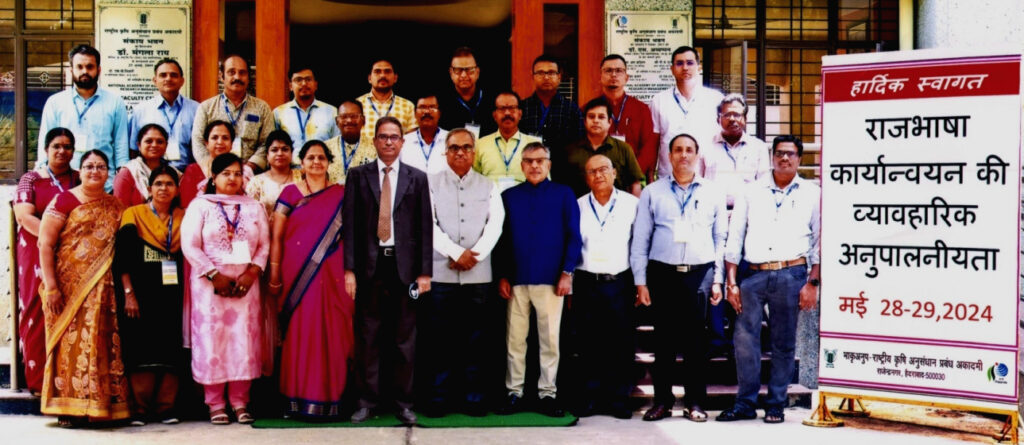
G. Venkateswaralu, Joint Director, NAARM, Dr S. K. Som, Principal Scientist and Dr J. Renuka, Joint Director (OL), were present at the inaugural session.
Dr. S.K. Som delivered a lecture on the practical use of Hindi in scientific institutions, while Dr. J. Renuka spoke about the importance of languages in technology transfer and its practical application.
In his address, Mr Anirban Kumar Vishwas, Deputy Director (OL) Regional Implementation Office, South Region, Bengaluru, referred to the policies of the Government of India, Kantasth translation software and various incentive schemes. Representatives of the offices made presentations about the ongoing Hindi activities in their respective institutions. This was followed by a brainstorming session where participants raised questions, and resource persons resolved their doubts.
The second day started with the lecture of Dr Ranjit Kumar, Principal Scientist on ‘Agricultural Business Management’, in which he explained the concepts of Minimum Support Price and other business activities in the Hindi language. Further, Dr R. V. S. Rao gave a lecture on Stress Management by touching upon the topics of stress, causes of stress, types of stress and best ways of combating stress.
Dr Rajendra Kumar Awasthi, Deputy Director (OL), ECIL, took a session on ‘Scientific Application of Translation.’ He presented extensive information on cloud translation and translation of scientific terminology, which the participants found very useful. In the final session, Dr Homnidhi Sharma, Deputy General Manager, BDL explained the process for filling out the revised proforma of the Parliamentary Official Language Committee, among other subjects.
Besides participating in the brainstorming session, Shri E. Ramesh and Smt. V. Annapurna presented vote of thanks. At the valedictory ceremony, Dr Ch. Srinivasa Rao, Director, NAARM, delivered the chairman’s address and handed over certificates to the participants.
